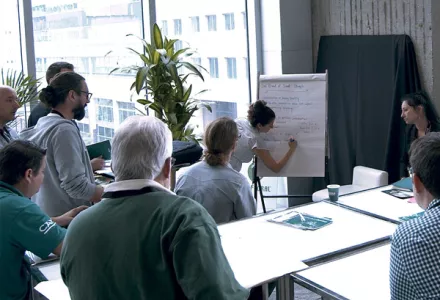In our final discussion of the year, we reflected on a recurring theme that has dominated our conversations throughout the past months in the cannabis industry: the challenges of production pitfalls, retail hurdles, international opportunities, THC inflation, competition, and price compression. This panel delved into the proactive approach taken to address these challenges by examining three major operational costs impacting the industry's bottom line: labor, power management, and automation.
Labor Management: Cultivating Employee Satisfaction for Sustainable Growth
One of the distinctive features of the cannabis industry lies in its unique culture, often not fully embraced. Similar to other sectors, the significance of employee satisfaction and retention cannot be overstated. High turnover rates can incur substantial expenses, making it imperative to implement strategies that resonate across industries. Succession planning emerges as a critical gap in the cannabis sector, influencing employee retention. Kelly Stevenson underscores the need for a comprehensive approach to labor management that goes beyond immediate concerns to foster long-term employee satisfaction.
Power Management: Navigating the Complex Landscape of Energy Infrastructure
Power management in the cannabis industry is a multifaceted challenge influenced by geographical location, energy infrastructure, power quality, and the integration of renewable energy sources. Mike Parry emphasizes that energy costs are just one facet of the equation. Advancements in technology have led to the use of specialized equipment requiring power quality often unavailable through conventional grids. Monitoring and adjusting incoming power to meet specific quality and quantity requirements is crucial, presenting an opportunity for cost-effective solutions.
Automation: Optimizing Production Efficiency and Workforce Dynamics
Automation emerges as a key strategy to address production costs related to both power management and labor. By focusing on eliminating mundane and repetitive tasks, automation optimizes production during optimal times. Hadi Feltham notes that empowering employees with specialized skills fosters motivation and job security. While acknowledging the absence of a one-size-fits-all solution, he highlighted diverse automation options that not only address staffing issues but also contribute to significant reductions in labor costs.
The Cost-Benefit Analysis: Beyond Initial Price Tags
A pivotal takeaway from the discussion is the need to look beyond the immediate price tag when investing in the cannabis industry. Whether it's related to employees, automation, or cutting-edge technology like power management, the overarching question is the long-term cost of not embracing these advancements. All three panelists emphasize the importance of combining incentives and grants to offset improvement costs, thereby maximizing the return on investment. In a dynamic industry, strategic investments prove essential for sustained growth and resilience in the face of evolving challenges.
As the cannabis industry continues to evolve, addressing these operational costs head-on provides a road map for companies to thrive in a competitive landscape while contributing to the overall growth and maturity of the sector.

Kelly Stevenson
Head of Human Resources for Truss Beverages, and President of Stone Water Group Inc.
Moderators: Shannon Kloet & Nico Hache of Hache Kloet Consulting



























